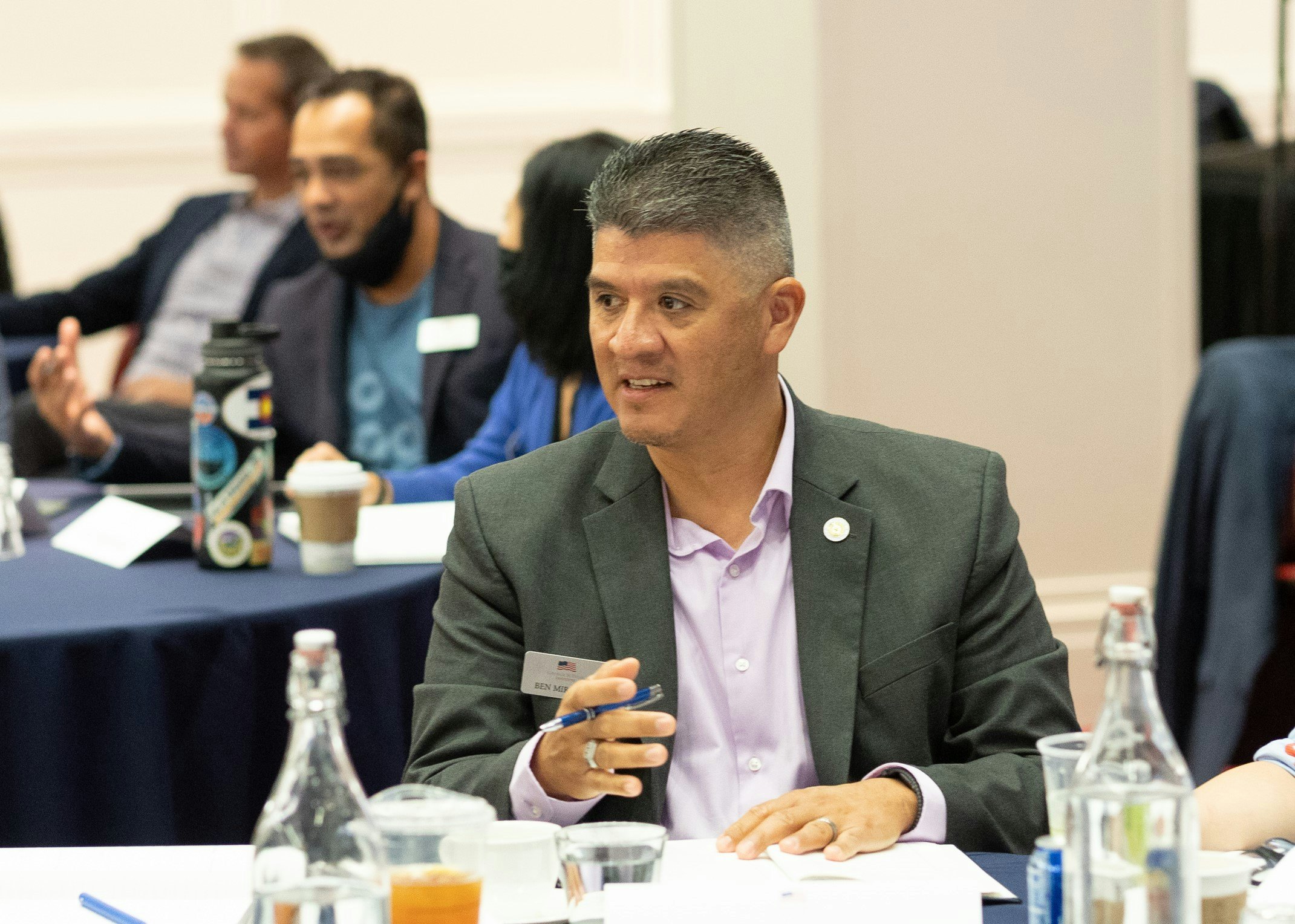By fostering a successful transition, we not only ensure our veterans and their families lead full and meaningful lives, we ensure we leverage a national cadre of determined and experienced leaders who will serve in new ways and with renewed purpose for the decades to come.
For the first time, a national convening brought together public and private sector leaders to address the full range of issues affecting transitioning veterans: employment, education, and health and wellbeing. More than 300 individuals and more than 70 major corporations, non-profits, higher-education institutions, think tanks, federal agencies and community organizations came together to identify common goals and set priorities to effectively close the gaps across the wide spectrum of services and supports for veterans, their families, and their caregivers.
During these task force sessions and panels, the participants committed to creating a unified mission and framework that specifies what a successful veteran transition is when health and wellbeing, education, and employment organizations work together. They also pledged to establish a system to improve data collection, sharing, and analysis within each area of need, and across veteran transitions. This will create accountability and allow organizations to measure and assess outcomes and stewardship.
This is a tall order. These issues are complex and complicated and resource intensive. No one entity can accomplish these commitments alone. We know for it to be fully effective, public-private partnerships must be enhanced and strengthened. Our current administration and government can also take the lead in strengthening these relationships by:
- Establishing an office in the White House for veterans and military families
- The VA and DOD healthcare system can be modernized through enhanced public private partnerships, realigned authorities, and regulations, improved policies and expanded outreach efforts The two organizations can also work to connect veterans to community organizations and resources to provide services that make veterans whole i.e. education and employment.
- Ensuring long term viability of the post-9/11 GI Bill
- Improving pre-transition activities and veteran readiness by expanding apprenticeships, fellowships, internships, and ID opportunities to customize TAP
However, this alone will not help solidify the road to a successful veteran transition.
- Businesses must commit and take action to codify a new era in veteran and military spouse employment by improving corporate recruiting, hiring, onboarding, and retention.
- Leaders in higher education must foster a national effort for veteran recruiting, admissions, on campus interaction, education success, and career placement.
- Health care providers, nonprofits, and community organizations working to advance health and wellbeing must improve and streamline service delivery, and improve integration and coordination of effort across all sectors, from national to community level.
The task forces must now continue working together and strengthen their relationships to empower veterans and their families. In so doing, these task forces, along with the Bush Institute, will help shape and drive legislation, policy, resourcing, programming, messaging, research, data-evaluation, and accountability.
By fostering a successful transition, we not only ensure our veterans and their families lead full and meaningful lives, we ensure we leverage a national cadre of determined and experienced leaders who will serve in new ways and with renewed purpose for the decades to come.
To learn more about the civilian-military divide and Bush Institute veteran resources:
- Visit the Stand-To webpage to learn more about discussion and watch video from the event
- Learn how the Bush Institute is connecting veterans with best-in-class health care providers
- Read more about the newly announced Veteran Leadership program
- Learn how you can combat the invisible wounds of war






























